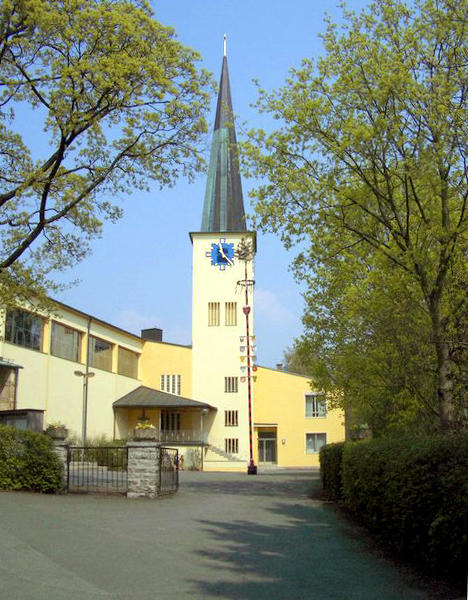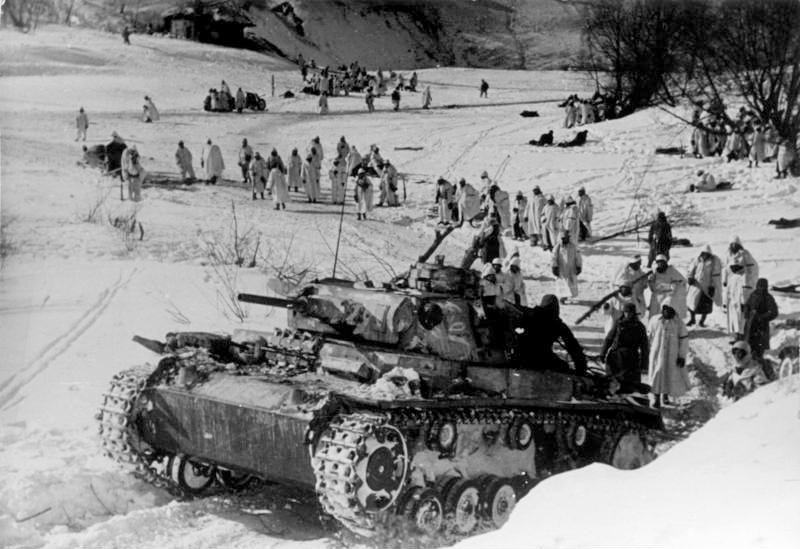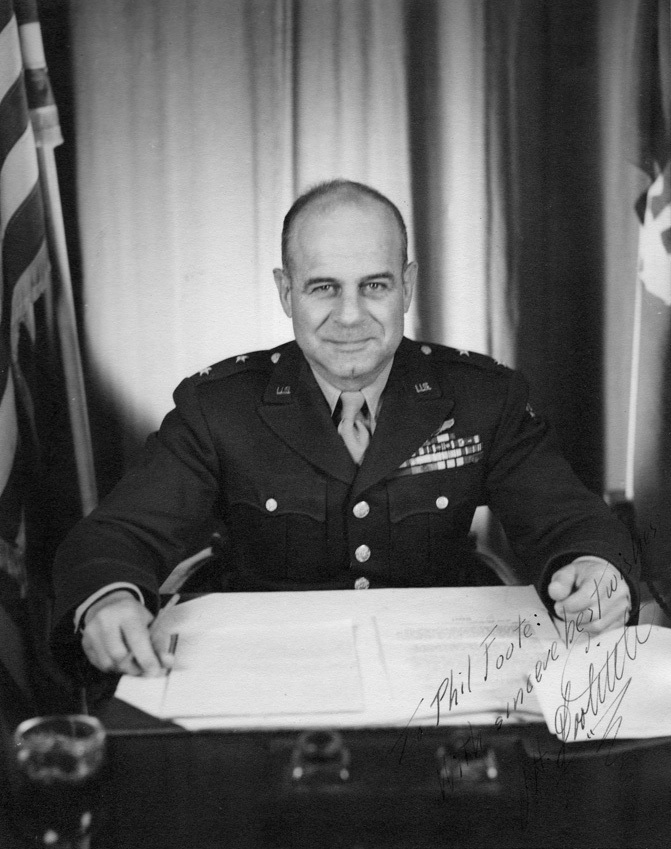|
Albin Wolf
Albin Wolf (28 October 1920 – 2 April 1944) was a German Luftwaffe military aviator during World War II, a fighter ace credited with 144 enemy aircraft shot down. All of his victories were claimed over the Eastern Front. Born in Neuhaus, Wolf grew up in the Weimar Republic and Nazi Germany. Following graduation from school, he joined the Luftwaffe in 1940. In May 1942, Wolf was posted to ''Jagdgeschwader'' 54 (JG 54—54th Fighter Wing) and claimed his first aerial victory on 6 August 1942. Following his 117th aerial victory, he was awarded the Knight's Cross of the Iron Cross on 22 November 1943. Promoted to an officer's rank, he was appointed squadron leader of 6. '' Staffel'' (6th squadron) of JG 54 and claimed his 144th and last aerial victory on 2 April 1944. That day, he was shot down. He was posthumously bestowed with the Knight's Cross of the Iron Cross with Oak Leaves. Early life and career Wolf was born on 28 October 1920 in Neuhaus, present-day part of S ... [...More Info...] [...Related Items...] OR: [Wikipedia] [Google] [Baidu] |
Naila
Naila is a town in the Frankenwald hills, in the Hof district of Bavaria. Naila is from the larger city of Hof, on both banks of the Selbitz river. History The earliest documentation of Naila dates at 9 January 1343. The first settlements in the area around Naila probably happened between the 12th and 14th century. The name Naila first appeared as "Neulins" (and variations thereof), has its origins most likely in the meaning "Small new settlement". In 1454, Naila was awarded a coat of arms by its overlord, Margrave John. After a brief episode under Prussian reign (1792–1810), Naila was included into the newly-established Kingdom of Bavaria. In 1818, it was awarded town privileges and in 1886, a railroad station was opened in Naila. After World War II, the Iron Curtain, just north of Naila, cut off a large part of the market for the local industries. The town was the seat of the then district of Naila until this was merged into Hof district in 1972, and had to give up t ... [...More Info...] [...Related Items...] OR: [Wikipedia] [Google] [Baidu] |
Selbitz
Selbitz is a town in the district of Hof, in Bavaria, Germany. It is situated 12 km west of Hof. Sport The town's association football club SpVgg Selbitz greatest success came in 2012 when it qualified for the new northern division of the expanded Bayernliga, the fifth tier of the German football league system The German football league system, or league pyramid, refers to the hierarchically interconnected league system for Football in Germany, association football in Germany that in the 2016–17 Season (sports), season consisted of 2,235 Sports_leag ..., where it played for two seasons until 2014. SpVgg Selbitz website – Facts and figures, accessed: 14 August 2014 References [...More Info...] [...Related Items...] OR: [Wikipedia] [Google] [Baidu] |
Demyansk Pocket
The Demyansk Pocket (german: Kessel von Demjansk; russian: Демя́нский котёл) was the name given to the pocket of German troops encircled by the Red Army around Demyansk, south of Leningrad, during World War II's Eastern Front. The pocket existed mainly from 8 February to 21 April 1942. A much smaller force was surrounded in the Kholm Pocket at the town of Kholm, about to the southwest. Both resulted from the German retreat after its defeat during the Battle of Moscow. The successful defence of Demyansk was achieved by using an airbridge and was a significant development in modern warfare. Its success was a major contributor to the decision by the Army High Command to try the same tactic during the Battle of Stalingrad, but it then failed to save the Sixth Army, commanded by Friedrich Paulus. Encirclement The encirclement began as the Demyansk Offensive Operation, the first phase being carried out from 7 January-20 May 1942 on the initiative of General Lieuten ... [...More Info...] [...Related Items...] OR: [Wikipedia] [Google] [Baidu] |
Kholm Pocket
The Kholm Pocket (german: Kessel von Cholm; russian: Холмский котёл) was the name given for the encirclement of German troops by the Red Army around Kholm, south of Leningrad, in World War II's the Eastern Front, from 23 January 1942 to 5 May 1942. A much larger pocket was meanwhile surrounded in Demyansk, about to the northeast. Both were the results of the German retreat following the defeat during the Battle of Moscow.Zabecki, p. 695–696 The air supply of Kholm and Demyansk was successful but led to an overconfidence in the German High Command on the Luftwaffe's ability to supply encircled forces by air, which would lead to disastrous consequences at the Battle of Stalingrad in late 1942 and early 1943. Overview At the Kholm pocket, 5,500 German soldiers held out for 105 days. The pocket was supplied by air but since it was too small for planes to land, supplies had to be dropped in and recovered by the German defenders. Among the airdropped supplies were ... [...More Info...] [...Related Items...] OR: [Wikipedia] [Google] [Baidu] |
Army Group Centre
Army Group Centre (german: Heeresgruppe Mitte) was the name of two distinct strategic German Army Groups that fought on the Eastern Front in World War II. The first Army Group Centre was created on 22 June 1941, as one of three German Army formations assigned to the invasion of the Soviet Union (Operation Barbarossa). On 25 January 1945, after it was encircled in the Königsberg pocket, Army Group Centre was renamed Army Group North (), and Army Group A () became Army Group Centre. The latter formation retained its name until the end of the war in Europe on 11 May after VE Day. Formation The commander in chief on the formation of the Army Group Centre (22 June 1941) was Fedor von Bock. Order of battle at formation Campaign and operational history Operation Barbarossa On 22 June 1941, Nazi Germany and its Axis allies launched their surprise offensive into the Soviet Union. Their armies, totaling over three million men, were to advance in three geographical directi ... [...More Info...] [...Related Items...] OR: [Wikipedia] [Google] [Baidu] |
Hans Beißwenger
Hans BeißwengerHis name, in German, is spelled with a "sharp S"; see ß. (8 November 1916 – 6 March 1943) was a German Luftwaffe fighter ace and recipient of the Knight's Cross of the Iron Cross with Oak Leaves during World War II. A flying ace or fighter ace is a military aviator credited with shooting down five or more enemy aircraft during aerial combat. In 500 combat missions, Beißwenger was credited with 152 victories, making him the 34th highest-scoring Luftwaffe fighter pilot of World War II. He was " ace-in-a-day" twice, shooting down five aircraft on a single day. All but one of his victories were claimed over the Eastern Front. He was reported missing in action in March 1943. Early life and career Beißwenger was born on 8 November 1916 at Mittelfischach über Sulzbach in the district of Schwäbisch Hall in Württemberg. He was the son of ''Volksschule'', a combined primary and lower secondary school, teacher. Following his graduation, he volunteered for ... [...More Info...] [...Related Items...] OR: [Wikipedia] [Google] [Baidu] |
Wingman
A wingman (or wingmate) is a pilot or UAV who supports another pilot in a potentially dangerous flying environment. ''Wingman'' was originally the plane flying beside and slightly behind the lead plane in an aircraft formation. According to the U.S. Air Force, The traditional military definition of a "Wingman" refers to the pattern in which fighter jets fly. There is always a lead aircraft and another which flies off the right wing of and behind the lead. This second pilot is called the "Wingman" because he or she primarily protects the lead by "watching his back." Description The wingman's role is to support aerial combat by making a flight both safer and more capable: amplifying situational awareness, increasing firepower, and allowing more dynamic tactics. Origins The concept of a wingman is nearly as old as fighter aviation. On 9 August 1915, Oswald Boelcke was already acting in the role when he shot down a French airplane pursuing Max Immelmann. Colonel Robert Smith pr ... [...More Info...] [...Related Items...] OR: [Wikipedia] [Google] [Baidu] |
Operation Barbarossa
Operation Barbarossa (german: link=no, Unternehmen Barbarossa; ) was the invasion of the Soviet Union by Nazi Germany and many of its Axis allies, starting on Sunday, 22 June 1941, during the Second World War. The operation, code-named after Frederick Barbarossa ("red beard"), a 12th-century Holy Roman emperor and German king, put into action Nazi Germany's ideological goal of conquering the western Soviet Union to repopulate it with Germans. The German aimed to use some of the conquered people as forced labour for the Axis war effort while acquiring the oil reserves of the Caucasus as well as the agricultural resources of various Soviet territories. Their ultimate goal was to create more (living space) for Germany, and the eventual extermination of the indigenous Slavic peoples by mass deportation to Siberia, Germanisation, enslavement, and genocide. In the two years leading up to the invasion, Nazi Germany and the Soviet Union signed political and economic pacts for st ... [...More Info...] [...Related Items...] OR: [Wikipedia] [Google] [Baidu] |
Invasion Of Poland
The invasion of Poland (1 September – 6 October 1939) was a joint attack on the Republic of Poland by Nazi Germany and the Soviet Union which marked the beginning of World War II. The German invasion began on 1 September 1939, one week after the signing of the Molotov–Ribbentrop Pact between Germany and the Soviet Union, and one day after the Supreme Soviet of the Soviet Union had approved the pact. The Soviets invaded Poland on 17 September. The campaign ended on 6 October with Germany and the Soviet Union dividing and annexing the whole of Poland under the terms of the German–Soviet Frontier Treaty. The invasion is also known in Poland as the September campaign ( pl, kampania wrześniowa) or 1939 defensive war ( pl, wojna obronna 1939 roku, links=no) and known in Germany as the Poland campaign (german: Überfall auf Polen, Polenfeldzug). German forces invaded Poland from the north, south, and west the morning after the Gleiwitz incident. Slovak military forces ad ... [...More Info...] [...Related Items...] OR: [Wikipedia] [Google] [Baidu] |
Defense Of The Reich
The Defence of the Reich (german: Reichsverteidigung) is the name given to the strategic defensive aerial campaign fought by the Luftwaffe of Nazi Germany over German-occupied Europe and Germany during World War II. Its aim was to prevent the destruction of German civilians, military and civil industries by the Western Allies. The day and night air battles over Germany during the war involved thousands of aircraft, units and aerial engagements to counter the Allied strategic bombing campaign. The campaign was one of the longest in the history of aerial warfare and with the Battle of the Atlantic and the Allied Blockade of Germany was the longest of the war. The Luftwaffe fighter force defended the airspace of German-occupied territory against attack, first by RAF Bomber Command and then against the United States Army Air Forces (USAAF) in the Combined Bomber Offensive. In the early years, the Luftwaffe was able to inflict a string of defeats on Allied strategic air forces. ... [...More Info...] [...Related Items...] OR: [Wikipedia] [Google] [Baidu] |
Unteroffizier
() is a junior non-commissioned officer rank used by the . It is also the collective name for all non-commissioned officers in Austria and Germany. It was formerly a rank in the Imperial Russian Army. Austria , also , is the collective name to all junior NCO-ranks in the modern day's Austrian ''Bundesheer''. It comprises the ranks of the assignment group M BUO 2 (professional NCO 2; de: Berufsunteroffizier 2) with the rank Oberwachtmeister (OR6), and M ZUO 2 (time serving NCO 2; de: Zeitunteroffizier 2) with the rank Wachtmeister (OR5). Training and education of the ''Unteroffizier corps'' was reformed in 1995 and until 2000 finally introduced to the armed forces. First effected were professional NCOs of the assignment group M BUO 1 (Stabsunteroffiziere, staff NCO's), followed by the assignment group M BUO 2 (Unteroffiziere, NCO's). In the result of a positive entrance examination aspirants attended the NCO traini ... [...More Info...] [...Related Items...] OR: [Wikipedia] [Google] [Baidu] |
Jever
Jever () is the capital of the district of Friesland in Lower Saxony, Germany. The name Jever is usually associated with a major brand of beer, Jever Pilsener, which is produced there. The city is also a popular holiday resort. Jever was granted city status in 1536. Unofficially Jever is sometimes referred to as ''Marienstadt'' (Maria city) in reference to Maria of Jever, the last independent ruler of the city. The inhabitants of Jever are named ''Jeveraner'' ("Jeverans"). Politics City Council The Jever City Council consists of 30 members—the fixed number for a town with a population of between 12,001 and 15,000 inhabitants. The 30 councillors are elected by local elections for a five-year term. The current term of office began on 1 November 2016 and ends on 31 October 2021. The full-time mayor Jan Edo Albers (Independent) is also entitled to vote in the city council. The results of the last local elections, on 11 September 2016, are as follows. Deviations from the results ... [...More Info...] [...Related Items...] OR: [Wikipedia] [Google] [Baidu] |


.jpg)



